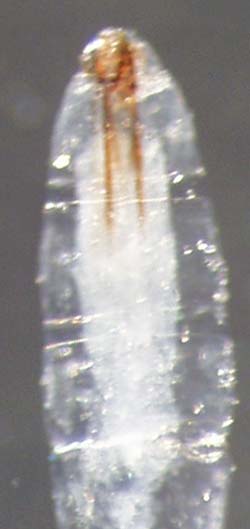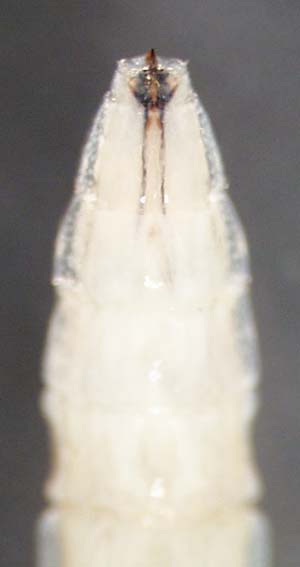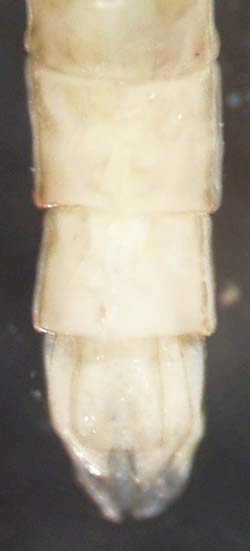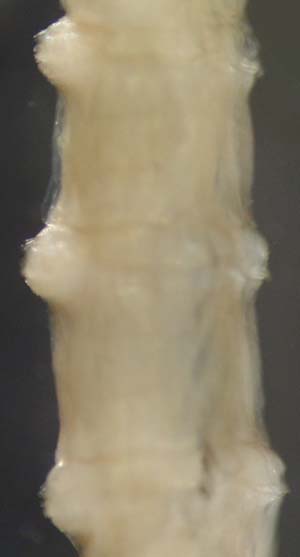
THE XERCES SOCIETY FOR INVERTEBRATE CONSERVATION Aquatic Invertebrates in Pacific Northwest Freshwater Wetlands |
| Identify taxa |
Dolichopodidae (long legged flies) |
These beneficial insects are predators on other insects, both as larvae and as adults. Most longlegged flies are terrestrial, but about a dozen aquatic or semiaquatic genera are widely distributed throughout the US. The aquatic species are almost exclusive to wetlands. The long legged flies have only a few rods for a head, which distinguishes them from larval crane flies that have a fairly well developed head under the skin. The larvae usually have prolegs in the form of welts that extend around each abdominal segment, and a distinctive posterior "pit" or depression at the end of the abdomen that is surrounded by a few short lobes. When looking straight into the pit, you can see the spiracles with which they breathe air from the water's surface. |
Size: small to medium Identifying feature(s): only a few rods for a head, prolegs in the form of welts Habitat: diverse; margins of streams Tolerance to pollutants: tolerant |
     |
|
 |
|
© 2007 Xerces Society
Contact info@xerces.org

